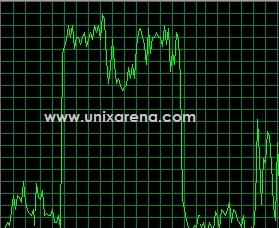I am sure many of the Solaris administrators will break their head in an order to find Solaris local zones wise resource utilization details on oracle Solaris 10. Because there is no simple inbuilt tool to find these details in Solaris 10 (Apart from prstat -Z). I just come across Jeff Victor’s Blog and found this script which will be very useful in Unix administration. This script will help you to find resource consumption of each Solaris local zone from the global zone level. Just give a try.
This script will give the following information:
- CPU Pool size
- Capped Physical Memory (aka RAM)
- Used Physical Memory
- Capped Swap space (Virtual Memory aka VM)
- Used shared memory
- Locked Memory
- Used Swap space (aka virtual memory)
Here I will demonstrate how to use this script and explanation about each field in zonestat script output.
Download the zonestat.pl script and make it executable.
Download the zonestat.pl script and make it executable.
Here is the sample output of the script.
bash-3.00# ./zonestat.pl
|--Pool--|Pset|-------Memory-----|
Zonename| IT|Size|Used| RAM| Shm| Lkd| VM|
------------------------------------------
global 0D 2 0.0 103M 256K 258K 431M
sol1 0D 2 0.0 82M 0.0 0.0 169M
==TOTAL= --- 2 0.1 185M 256K 258K 1.2G
bash-3.00# ./zonestat.pl -l
|----Pool-----|---CPU-----|----------------Memory----------------|
|---|--Size---|Pset-------|---RAM---|---Shm---|---Lkd---|---VM---|
Zonename| IT| Max| Cur|Used|Shr|S%| Cap|Used| Cap|Used| Cap|Used| Cap|Used
--------------------------------------------------------------------------
global 0D 2 2 0.1 1 50 91M 18E 256K 18E 258K 18E 423M
sol1 0D 2 2 0.0 1 50 77M 18E 0.0 18E 0.0 18E 169M
==TOTAL= --- ---- 2 0.1 --- -- 789M 168M 789M 256K 755M 258K 1.3G 1.2G
bash-3.00# ./zonestat.pl interval 4
|--Pool--|Pset|-------Memory-----|
Zonename| IT|Size|Used| RAM| Shm| Lkd| VM|
------------------------------------------
global 0D 2 0.0 92M 256K 258K 423M
sol1 0D 2 0.0 76M 0.0 0.0 169M
==TOTAL= --- 2 0.0 168M 256K 258K 1.2G
--------
global 0D 2 0.0 91M 256K 258K 423M
sol1 0D 2 0.0 75M 0.0 0.0 169M
==TOTAL= --- 2 0.0 166M 256K 258K 1.2G
--------
global 0D 2 0.0 91M 256K 258K 423M
sol1 0D 2 0.0 75M 0.0 0.0 169M
==TOTAL= --- 2 0.0 166M 256K 258K 1.2G
--------
global 0D 2 0.0 91M 256K 258K 423M
sol1 0D 2 0.0 75M 0.0 0.0 169M
==TOTAL= --- 2 0.0 166M 256K 258K 1.2G
You have the help option to know each field in zonestat command output.
bash-3.00# ./zonestat.pl -help
Usage: zonestat [-h] | [-l] [interval [count]]
-h: usage information
-l: display columns showing the configured limits
Output with -l option:
|----Pool-----|------CPU-------|----------------Memory----------------|
|---|--Size---|-----Pset-------|---RAM---|---Shm---|---Lkd---|---VM---|
Zonename| IT| Max| Cur| Cap|Used|Shr|S%| Cap|Used| Cap|Used| Cap|Used| Cap|Used
Pool: information about the Solaris Resource Pool to which the zone is assigned.
I: Pool identification number for this zone's pool
T: Type of pool: D=Default, P=Private (temporary), S=Shared
Max: Maximum number of CPUs configured for this zone's pool
Cur: Current number of CPUs configured for this zone's pool
CPU: information about CPU controls and usage
Cap: CPU-cap for the zone
Used: Amount of CPU power consumed by the zone recently
Shr: Number of FSS shares assigned to this zone
S%: Percentage of this pool's CPU cycles for this zone ('HH' = 100%)
Memory: information about memory controls and usage
RAM: Physical memory information
Cap: Maximum amount of RAM this zone can use
Used: Amount of RAM this zone is using
Shm: Shared memory information
Cap: Maximum amount of shared memory this zone can use
Used: Amount of shared memory this zone is using
Lkd: Locked memory information
Cap: Maximum amount of locked memory this zone can use
Used: Amount of locked memory this zone is using
VM: Virtual memory information
Cap: Maximum amount of virtual memory this zone can use
Used: Amount of virtual memory this zone is using
Hope this article is informative to you.
